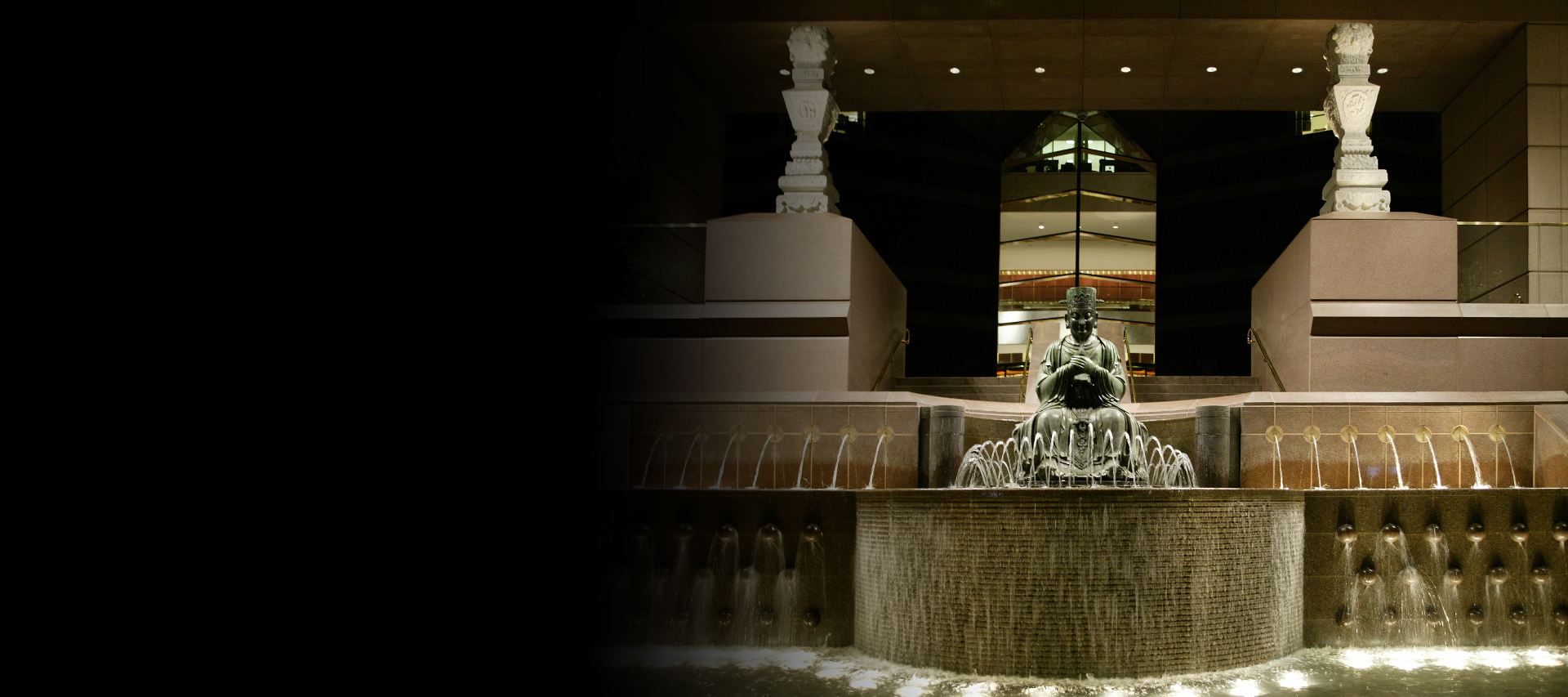
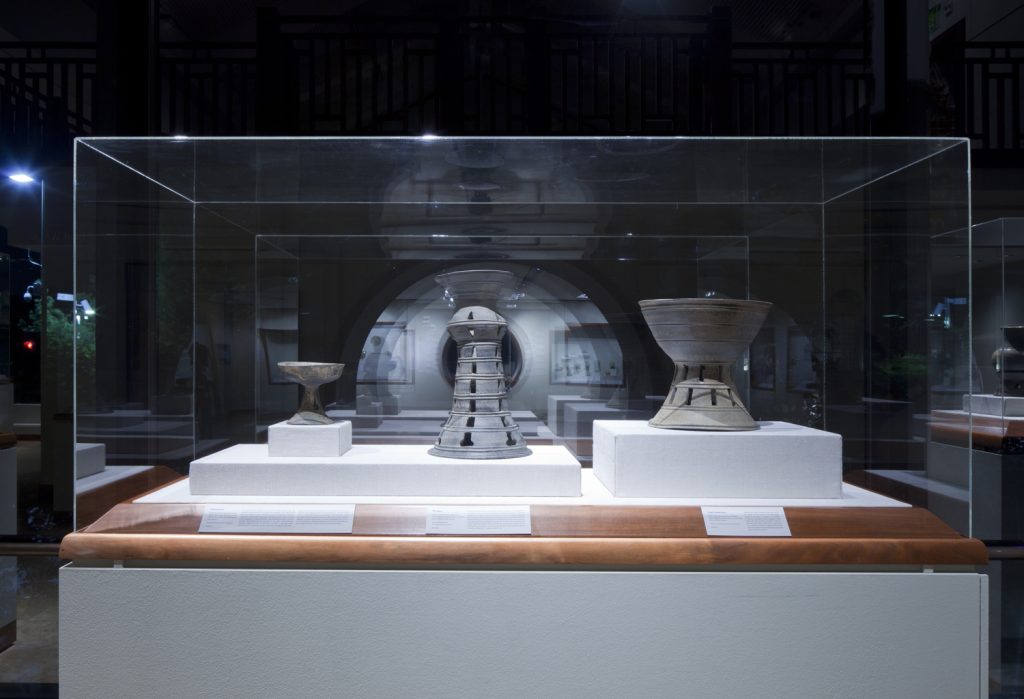
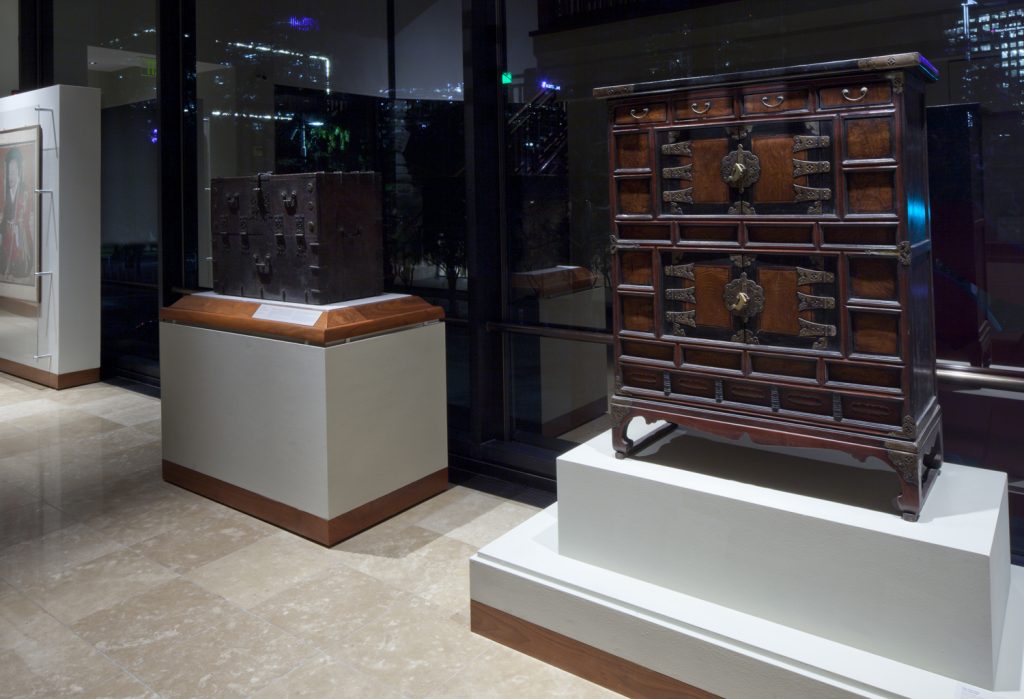
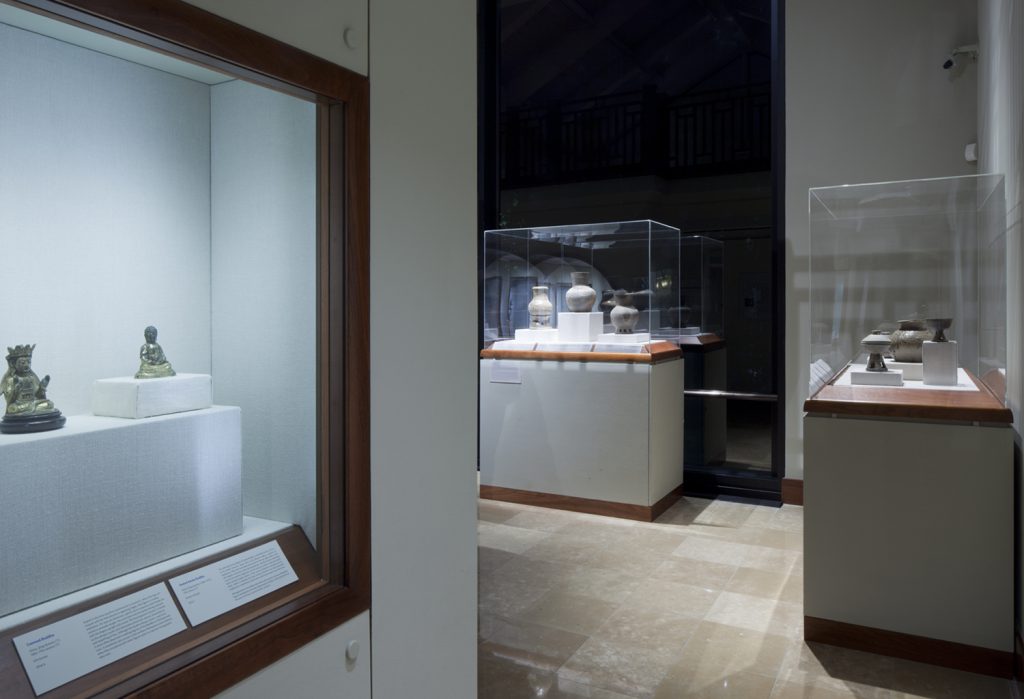

incised decoration. Crow Collection of Asian Art, 2010.49.
Over the centuries, Korean artists have produced superior examples of calligraphy, sculpture, lacquerware, and paintings, but it is ceramics for which they have gained special renown. In the early 12th century, Korean ceramic artists mastered the highly prized green, blue, and gray hues of glazed celadon ceramics.
Xu Jing, a Chinese scholar and connoisseur who visited Korea as part of an official envoy in 1123, wrote that these Korean celadon wares were “first under heaven.” Xu compared them to the famous Ru ware of the Northern Song (960–1127), the rarest of all ceramics made exclusively for the Chinese court, grand monasteries, and a few high-ranking noble households. Japanese connoisseurs also prized Korean ceramics and imported select pieces for use in their tea ceremonies, especially during the Momoyama (1573–1615) and Edo (1615–1868) periods. Often overshadowed by China and Japan, Korea largely escaped the attention of Europeans and Americans until the early 20th century, thus its ceramic traditions have only recently gained recognition in the West.
This exhibition introduces the Jerry Lee Musslewhite collection, a small but stellar group of fifty-three artworks from Korea acquired by the Crow Collection of Asian Art in 2010. This collection includes beautiful examples of the three major areas of Korean ceramics, including Goryeo dynasty (918–1392) celadon and Joseon dynasty (1392–1910) porcelain as well as rare gray stoneware from the early Three Kingdoms period (57 B.C.–A.D. 935). The collection also includes a small selection of Korean paintings and some very fine chests, boxes, and other examples of decorative art. Together, they give the Crow Collection the foundation for a comprehensive collection of Korean art.
This exhibition introduces the Jerry Lee Musslewhite collection, a small but stellar group of fifty-three artworks from Korea acquired by the Crow Collection of Asian Art in 2010.
The original collector, Jerry Lee Musslewhite (1937–2009), was a longtime docent at the Crow Collection toward the end of his life. Born in Arp, Texas, he studied fine arts in college and subsequently took a position in South Korea working for the US Army as an arts instructor. He remained in Korea for more than twenty-five years, and in his spare time he became an avid collector of Korean art and antiques, which he shipped to Texas for storage every three years or so. Eventually this vast collection numbered in the thousands, the best of which are showcased in this exhibition as a tribute to his keen eye for quality, his passion for art, and his desire to share his love of Korea with museum visitors in his home state of Texas.
